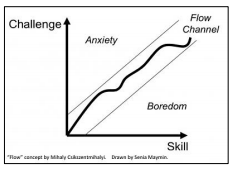Can we afford to ignore happiness?
Guest Contributor: Renee Jaine – Choice Architect at #ogilvychange
Two months back, Warren explained that ‘happiness economics’ is on the rise – which means countries are beginning to adopt measures like ‘Gross National Happiness’, alongside traditional progress indicators like Gross Domestic Product (GDP). Now, happiness may seem like a wishy-washy subject, fairly distinct from the cold rigour of economics. But today I’d like to argue that happiness is actually a central driver of productivity and economic progress. In which case, we need to ask ourselves, can we afford to ignore happiness?
Let’s start by questioning some assumptions. As any economics student knows, GDP represents the sum total of productive activity in a country – and one reason we care about GDP is that we assume the more productive and wealthy we are, the happier we’ll become. But what if we’ve got it backwards? What if the connection isn’t increase GDP and happiness will follow, but increase happiness and GDP will follow?
This is a big idea, so let’s bring it down to the level of the organisation – where most productive activity occurs. There’s more evidence than ever for the idea that the happier employees are, the more productive they are. For instance:
- A review of more than 225 research studies found happier individuals “are more likely to secure job interviews, to be evaluated more positively by supervisors once they obtain a job, to show superior performance and productivity, and to handle managerial jobs better. They are also less likely to show counter-productive workplace behavior and job burnout” (p.822).
- Shawn Achor, author of New York Times bestseller ‘The Happiness Advantage’ notes that when your brain is in ‘positive’ mode rather than negative, neutral or stressed – “Your intelligence rises, your creativity rises, your energy levels rise. In fact, we’ve found that every single business outcome improves. Your brain at positive is 31% more productive . . . You’re 37% better at sales.”
- Research by the Oxford-based iOpener Institute shows the happiest employees spend twice as much time ‘on task’ compared with the least happy employees – and they have 65% more energy.
- A study published in this month’s Journal of Labor Economics again confirmed the link between happiness and productivity. As one lead researcher explained, “The driving force seems to be that happier workers use the time they have more effectively, increasing the pace at which they can work without sacrificing quality”.
Happy employees are more productive – so as a business owner, it’s important to consider whether you could do more to keep your people happy. And this doesn’t have to be a costly exercise. According to Daniel Pink, best-selling author of ‘Drive’, the most effective way to motivate staff in cognitively demanding roles is not through bonuses, but by boosting intrinsic motivation – i.e. people’s desire to do the job, because the work is rewarding in-and-of-itself.
Intrinsic motivation is boosted when employees experience autonomy, mastery and purpose in their roles. I’d highly recommend Dan Pink’s talk in full, but if you don’t have time to watch it, here’s a quick summary.
Autonomy is “the urge to direct our own lives”. Google has famously allowed their engineers radical autonomy – letting them spend roughly 1 day in 5 on their ‘pet projects’. This is called ‘20% time’, and as Pink explains, “about half of the new products in a typical year are birthed during that 20% time”, including major successes like Gmail.
 Mastery is “the desire to get better and better at something that matters”. For employees to achieve mastery in their role, their work should both allow them to use their skills, and require them to ‘stretch’ and extend their skill set. Too much stretch and employees get stressed, too little stretch and your people will be bored – as summarised in the visual on the left.
Mastery is “the desire to get better and better at something that matters”. For employees to achieve mastery in their role, their work should both allow them to use their skills, and require them to ‘stretch’ and extend their skill set. Too much stretch and employees get stressed, too little stretch and your people will be bored – as summarised in the visual on the left.
Purpose is “the yearning to do what we do, in the service of something larger than ourselves”. The Beatles were right – we all want to change the world. And perhaps more than ever before, we want our work to make a difference, not just make a dollar.
So what can you do, in practical terms, to increase your team’s intrinsic motivation – and ultimately their happiness and productivity?
You can start by introducing some happiness-boosting ‘nudges’. These ‘nudges’ are small changes – to your organisational processes, incentive schemes and communications – that make happinessboosting behaviours more likely. For instance, you could design nudges to:
- Increase autonomous action – by offering your employees some Google-style free time in which to work on passion projects & new business opportunities
- Increase capacity and mastery – by first identifying your employee’s key strengths and then developing processes and incentive schemes that ‘nudge’ employees to build on these
- Build shared purpose and commitment – by focusing your communication less on what you do, and more on why you do it
The point here isn’t to give an exhaustive list of happiness-boosting nudges. The point is – happiness isn’t a wishy-washy subject, separate from business and economics. Happy employees are productive employees, and productive employees build great businesses and greater GDP. So go spread some smiles today
* * * * *
Renee has an MSc (Distinction) from the London School of Economics, where she focused on the links between Happiness, Public Policy and Behaviour change. In her current role as a Choice Architect at #ogilvychange, she helps public and private sector clients to achieve their objectives, by designing effective behaviourchange ‘nudges’. Contact renee.jaine@ogilvy.co.nz

